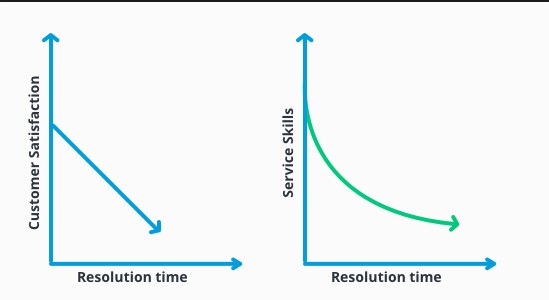Customer Satisfaction in Soul Bar and Bistro
Abstract
Customer satisfaction is highly important in terms of growth for any small or big business. One of the basic factors about how to please the customers is inside the topic of customer satisfaction issue. Customer satisfaction helps the business to run, improve and make profit. Satisfaction helps to gain the loyalty of customers. Good service would make consumers happy which will lead to better profit. This research study was made to bring out the employee’s point view on the customer satisfaction issue of Soul bar and bistro. Also, if the customer satisfaction was good enough or need to do more in order to satisfy consumers properly. Along with that, it is important to hold on to the old customers who have been loyal to the host company.
The information was collected based on the survey process from the employees of soul bar and bistro which is situated on Auckland, New Zealand. The survey was close ended and the quaternary sent via email or sent out to the host company for filling up. This whole research was done by the help of secondary quantitative method. This study will help the company to improve their services and products for the betterment of customer satisfaction.
Chapter 1: Introduction
1.0 Introduction
The customer satisfaction is the main aim and objective of any organization especially Soul Bar and Bistro. The bar is New Zealand based, and their main purpose is to satisfy their customer in every possible way. The study of this topic revealed many problems and issue which are faced by both companies and the customers. The methods are too applied to reduce the problem and research was done to overcome those problems.
1.1 Background of the Assignment
The customer satisfaction has started with the start of any business, and Japan was the first country to start a business. The sole aim of any company or eatery should have the customer satisfaction. The business with good and experienced employees leads to the inclined growth of company. They are best in their job, but none having knowledge in customer satisfaction, leads to the failure of that organization. The organization like some eatery will also focus on the quality of food, sitting arrangement and environment, behavior and many more. The restaurant Soul Bar and Bistro has been the top restaurant in whole of New Zealand. This proves that this restaurant is serving their customer with great effort and value. The customer not only needs food or service but they want some respect, values, etiquettes and culture. The mentioned things are also necessary while doing business and loyalty of customer also increases hence forth.
The top businessmen and entrepreneur advices young mind and soul to do the customer oriented business for long run. They had experienced it earlier, and they came to know customer oriented business will only run in the long run. The business of any kind always deals with the customer may be it direct or indirect contact.
1.2 Rationale of the Assignment
The issue with the restaurant or any other restaurant is that cannot provide full service. The restaurant with full service is closing their business gradually. The reason behind this issue is that customer have now gained access to internet. As per the view of Zablah et al. (2016), the help of internet provides food at people’s house, and now no one wants to go out and dine. The concept of full service restaurant has been declining and fast food restaurant has gained the popularity.
The fast food restaurant provides same quality of food in much lower cost which attracts the people. In the opinion of Han and Hyun (2015), the only service these fast food chains provide is food and cost effective, but the service provided by the full service restaurant is totally different. This problem has been faced by the restaurant, and now the issue faced by the customer needs a brief discussion.
The customer appreciate each and every work like first impression, prompt service, Assignment correction, and neat and clean place. The mentioned issue needs correction immediately for running business. According to Dingus et al. (2016), the issue is raised for the lack of it, and the restaurant relying only on the profit making and business oriented. The purpose of the restaurant should be customer satisfying oriented, where they need special attention, prompt service, and neat and clean dining area.
The research done has considered every condition and problems, and the method applied has stated many crises. The research shed light on the failure and success of the eatery and customer satisfaction. The data extracted from the history, reviews and journals revealed that the state of restaurant has to be in proper condition and in proper location. The dining area and staff cleanliness states the condition of the restaurant.
1.3 Problem Statement
The issues and problems related customer satisfaction are the first priority of any eatery. The problem usually starts at the beginning of restaurant where host does not respond properly. The behavior of the host and the server is rude and the food order does not match the quality mentioned. The food plays the main role in customer satisfaction, as they forget the problems and forgive. That means the restaurant need to improve on its small things and behavior, otherwise they will lose customers.
The first problem customer face is that they face long time to solve a problem. The problem may arise at any point, and tackling that problem in less time is really appreciated. The host needs to manage the time also make is less painful for the customer by entertaining them with other things. Usually host and server apologizes and provides some concession on billing amount or providing some dish which would make up the problem.
The second problem is that staffs and host need to make valid promises, as fake promises lead to the dissatisfaction of the customer. The restaurant with good and tasty food needs to live up to the standard of people. The fault and the mistakes needs to be properly, ignoring it may cause severe action. The restaurant is losing its customer due to the internet expansion; the restaurant is left out with fewer customers.
1.4 Research Aim
The main aim of the research is customer satisfaction in the Soul Bar and Bistro. The customer satisfaction leads the company to great growth and popularity of the restaurant.
1.5 Research Objective
- To find out the factors affecting the retro bar customer satisfaction
- To analyze the impact of customer satisfaction in the Soul Bar restaurant
- To evaluate the issues in customer satisfaction for getting high productivity level for Soul Bar restaurant
- To recommend the ways for improving customer satisfaction for gaining high level of productivity
1.6 Research Question
- How to resolve the waiting time for the resolve of problem by customers?
- What are the problems that lead to the customer dissatisfaction?
- The difficulty faced by restaurant to tackle with fast food restaurant?
- What is the recommendation for customer satisfying?
1.7 Structure of the Research
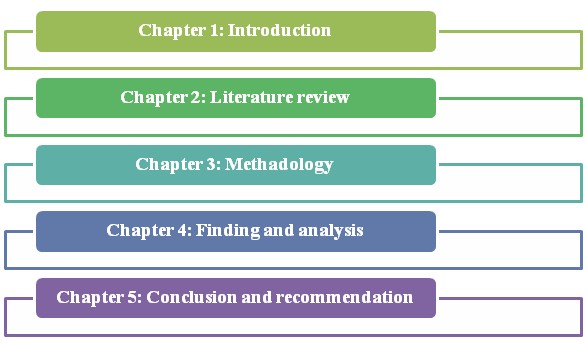
Figure 1.1: Structure of the research
(Source: Created by the learner)
1.8 Conclusion
The study of the research on the customer satisfaction is done and extracts some theory. The problems, issues are briefly described and explained. The problems are described in the research where researcher has to find all the issue. The application of various methods which will resolve the issue is also mentioned. The weakness and strength are also discussed in this chapter, which portrait the standardization of the restaurant.
Chapter 2- Literature Review
2.1 Introduction
Customer satisfaction is very crucial for any organization in order to grow in a competitive field. It is a business philosophy that creates different values to satisfy the customer needs. In a customer perspective the customer satisfaction stands for creating a worth value by both ends. Customer wants better service quality in return of the value. Service quality depends on how well customer needs are fulfilled. The two fundamental factors in hotel industry is to provide high quality service and improving customer satisfaction. Therefore, hotels with good quality service can definitely improve their profitability.
2.2. Conceptual Framework
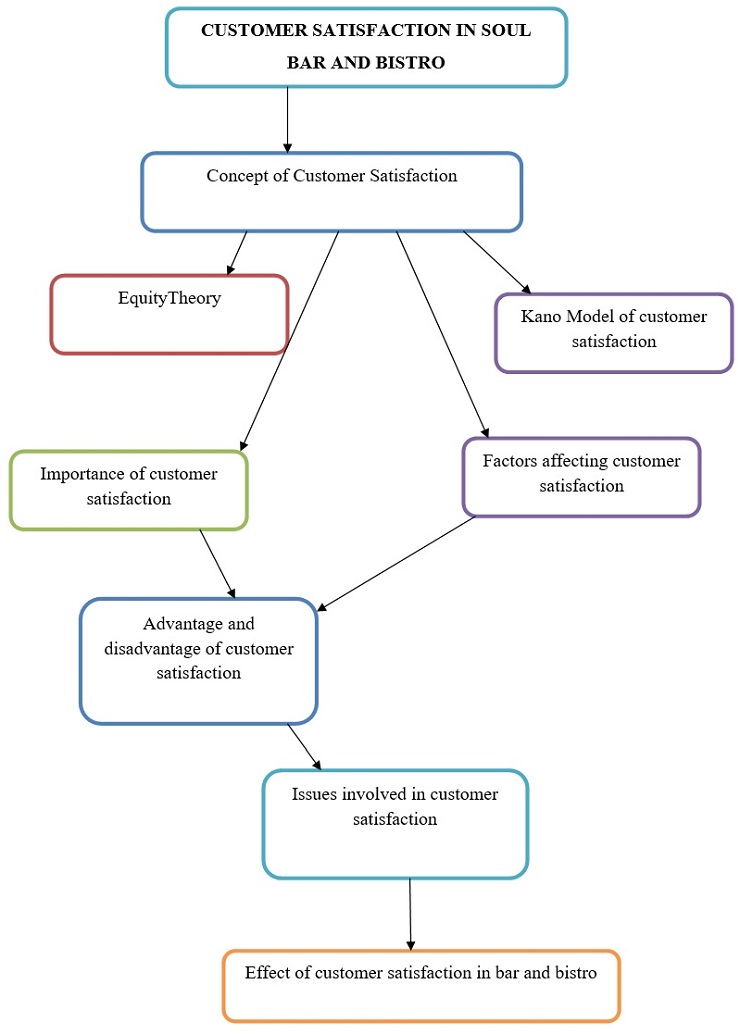
2.3 Concept of Customer Satisfaction
The main aim of customer satisfaction strategy is how to impress a customer and increase the profit of company. A good company has to design a plan over customer satisfaction plan. The design is create by the management of any company. Customer is satisfied when buying any products creates peace of mind. The trust of the company plays a big role in customer satisfaction. After using the products, if customer gets impressed then company gets success. Any company can impress a customer by their loyalty over customer and the words of mouth. According to Balvers Gaski & McDonald (2016), some parameters are responsible for customer satisfaction. They are Service Quality, product quality, loyalty of the product, reasonable price of product and availability of the product.
Service quality is depending on understanding the customer. Company has a responsibility to understand the demand of customer. Communication is also important for service quality. The timing of servicing product by company is always being appropriate as their words. Company has to assured customer that they served a good quality product. Here the company Soul Bar and Bistro is including on the category of food and drinks industry. Their service quality is depending on the courtesy of waiter, communication of waiter and the timing of service. These parameters are important because customers have to please on the spot by company.
Product of quality is depending on the feedback of customer. Servicing good quality products is the reason of good feedback. Product quality is the main factor of satisfaction whether it is costly or not. As per views of Bandaru et al. (2015), customer always prefers the good quality. In food and drinks industry the quality of food and drinks is most important because it relates to the health of human beings. The Soul bar and Bistro have to look after mainly in the quality of their drinks. They have to impress the customers on spot.
Company has to maintain the loyalty of the product. It will be same as the description of the product features written in back of the product. As per views of Kumar & Malik (2017), the quality of the product should be same which is assured by the company. In the industry of food and drinks it is one of the important part because it it related to health. In pub and bar the product loyalty has to maintain because customer feedback is get instantly.
Price of the product is also a reason of customer satisfaction. Sometimes the price is not matter but quality matters. Some customers want products in low cost. For them quality is not a matter. Some customer wants good quality whether the price is low or high. Another feature of customer satisfaction is availability. For bar and pub availability of various products is one of the reason of customer satisfaction.
2.4 Equity Theory
On the basis of Equity Theory, when customer become aware of their input or output ratio as being fair only then satisfaction exits. In the opinion of Bontis, Janošević & Dženopoljac (2015), equity models came from equity theory, based on the input and output ratio. Input and output ration plays a major role in satisfaction. According to this equity theory, people to an exchange will feel properly treated that the reason why satisfied. Whether a person feels equitably treated or not, depends on several factors such as the paid value, received benefits or service. Also, time and effort while transaction and the previous transaction experience (Hapsari, 2016). This refers that comparative bottom-line may take several different forms. In the views of Izogo & Ogba (2015), this theory is quite similar with the comparison level theory. This implied that consumer mainly used the comparison bases with satisfaction judgments.
Customer disconfirmation leads to the creation of customer dissatisfaction. Satisfaction topics and equity, made a place in entire topic. According to Kim, Vogt & Knutson (2015), equity models is different from the other models when it comes to consumer satisfaction. Satisfaction is measured in comparison with other parties in a trade and the all parties outcome sharing the same experience are taken into discussion. As argued by Liat, Mansori & Huei (2014), the equity models can produce a much higher picture of customer satisfaction that may not be possible with other traditional models in some situations. Traditional models might be useful in portraying situations where a major element of the transaction considered in equity models with the satisfaction with other parties.
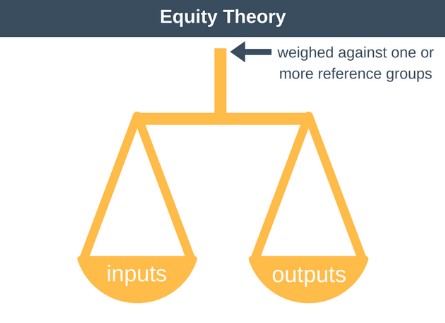
Figure 2.1: Equity Theory
(Source: Liat, Mansori, & Huei, 2014)
Dissatisfaction is highly valued when calculated with customer satisfaction. As argued by Minh, Anh & Matsui (2015), if the customer obtains less in terms of time, money and other costs then dissatisfaction comes. Therefore, satisfaction is a mental state of the reward which can be enough or not enough. On the contrary Molina-Azorín et al. (2015), the input or output ratio of the service experience can be compared with received net profit of others who have experienced almost identical offer. As argued by Radojevic, Stanisic & Stanic (2015), satisfaction has seen as a reciprocal judgments and takes a scrutiny about both the condition and benefits gained with the help of a purchase. Along with the value and efforts brought by a customer to gain from that purchase. Equity theory is vastly applied when it comes to customer satisfaction or dissatisfaction. This model is an alternative way to portray how the comparisons work.
2.5 Kano Model of customer satisfaction
Kano model refers to the product allocation on the basis of how they are grasp by the consumers and the effect on customer satisfaction. As argued by Yang, Chen & Shen (2017), this model is useful for taking a decision about guiding which reciprocates when good is enough or more is the more the better. Kano analysis tool is highly useful for development of the product and service. This model is helpful to understand the relationship between the product performance and satisfaction of a customer.
Kano model has four categories such as performance, indifferent, excitement and threshold.
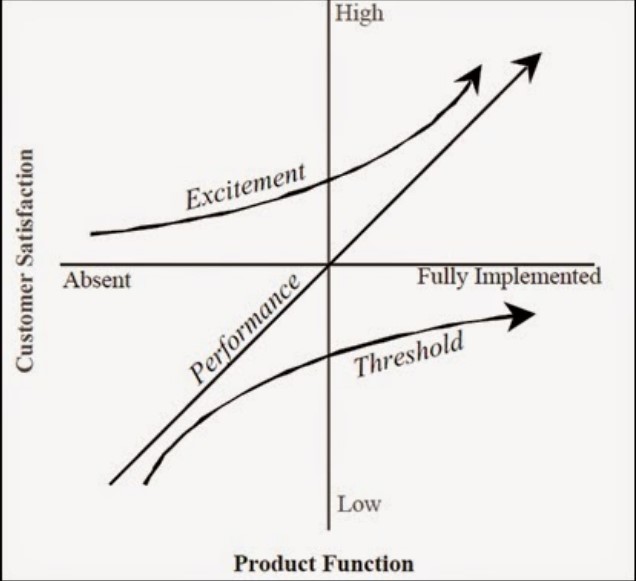
Figure 2.2: Kano Model of customer satisfaction
Source: (Liat, Mansori & Huei, 2014)
More is better refers to the performance attributes, the better fulfillment moves forward to the linear increment of the consumer satisfaction. In the opinion of Minh, Anh & Matsui (2015), any poor performance of this attributes can cause harm to the customer satisfaction. Indifferent attributes comes handy in decision making and has no direct relation with consumer satisfaction. As argued by Molina-Azorín et al. (2015), excitement attributes is very peculiar, uses of this can make a customer happy and highly satisfied. However, on the non appearance of this attributes doesn't cause any customer dissatisfaction. Threshold attributes is a must when it comes to product or service and expected by the consumers. Performance improvement of this threshold attributes cannot bring more customer satisfaction and can cause high costs of products. Threshold attributes if not present then it can cause dissatisfied customer.
This keno model is helpful tool for business and service sectors. One can make better decisions about product quality and service using this keno model. In the opinion of Radojevic, Stanisic & Stanic (2015), at the evaluation stage the degree of importance is a critical dimension determined by the customer.
In the current times, there is demand which is increasing day by day. As argued by Yang, Chen & Shen (2017), pressure of coming out with the new products and great service are the main factors to satisfy the consumers. The time difference between the original idea and final outcome is suffering from major pressure (Liat, Mansori & Huei, 2014). This is the main reason why the product or service quality was getting low because the main focus was on the prevention and not on the repairing. The spoken attributes are the manifested expectations of the consumer. Kano model can analyze customer satisfaction against attributes perceptions.
2.6 Advantage and disadvantage of customer satisfaction
Advantages
The advantages of customer satisfaction are many, and advantages usually end up proving profit to the restaurant. The loyalty of customers is maintained and the profit also increases, which is plus point for the restaurant. Some advantages are briefly described below and show the positive side of customer satisfaction.
Loyalty increases
The satisfied customers are going to last for longer time and this overturn increase the profit. As opined by Sengupta et al. (2015), the loyal customer itself promotes the restaurant, which attracts more customers. Therefore satisfying customer is very important.
The hiking of price
The existing customer is so much satisfied with restaurant that hiking of price in food does not affect them. The hiking in price is done to maintain the overhead expense of the restaurant plus some profit.
Advertising through customers
The satisfaction provided by restaurant is a type of advertising opts eatery. The loyal and satisfied customer recommends their relatives for this restaurant. The promotion may be by direct contact, by telephones and through social media.
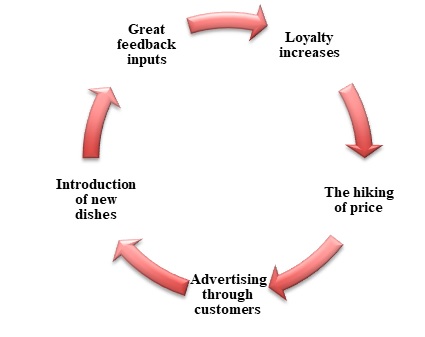
Figure 2. 3: Advantage of Customer satisfaction
(Source: Creatyed by learner)
Introduction of new dishes
The restaurant introduces many new variety of food and dishes to their existing customers. This can also be termed as experiment for new food. The loyal customer don’t mind of introducing new food.
Great feedback inputs
The customers are so satisfied with the restaurant that they provide their feedback and inputs for betterment of the restaurant. As per the view of Eid (2015), the feedback provided for the new process, product and service, this help in management of food and service quality.
Disadvantage
Decrease in the loyal customers
The irregular behavior may result in the reduction of the existing customer. The customer does not get the same experience and they are dissatisfied with that. The loyalty is most important for any firm, the loyalty can be ruined by either food or he service.
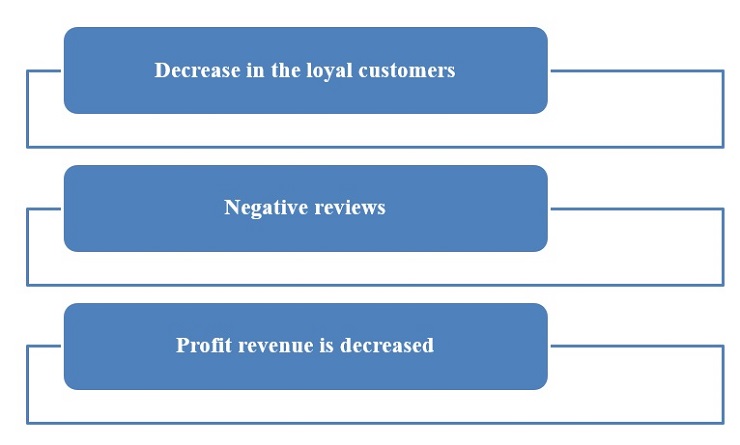
Figure 2.4: Disadvantage of Customer satisfaction
(Source: Learner)
Negative reviews
The customer dissatisfaction leads to the negative review for the restaurant. The restaurant who cannot provide promised food or service leads to the negative review. According to Perez and Del Bosque (2015), the negative review will have a great impact on that restaurant, as everyone will get to know about the restaurant for their bad service. This will be devastating for the staffs and the owner of the restaurant. The social media plays a vital role in promoting and impeding a brand or firm. The negative review has to be reduced in order to long run for a restaurant, and customer satisfaction is first priority.
Profit revenue is decreased
The lack of customer satisfaction implants a great impact on a restaurant’s revenue. The complains and negative review basically needs to be checked and corrected immediately. The longer the time taken to improve the complain will again lead to the customer dissatisfaction. The revenue is totally affected by the bad impact of customer satisfaction, as they spread that certain restaurant is not good. The impede of this impact will generate less customers, and the loyal customers will starts fleeing. The margin of profit will decrease and after sometime they even face loss. The loss revenue of any restaurant is very disheartening, but same time they lack proper service and food.
2.7 Factors affecting customer satisfaction
Customer Satisfaction is measured by the prior expectancy of the products or service and the final outcome of products or service. Customer satisfaction with product and services is considered highly important when it comes to competitiveness and success. Customer evaluates the ongoing services and then satisfaction meter comes. According to Kim, Vogt, & Knutson (2015), Customer satisfaction is mainly when customer express the state of their satisfaction and measure the satisfaction level. Generating customer and satisfied them is very much costly for any small business but it is profitable in the long run. As argued by Zhou et al. (2014), satisfaction makes the loyal customer and it’s proved that getting new customer is difficult than holding on the old one. A small business should concentrate on the product quality improvement and fair pricing for their customer satisfaction. Ultimately this could help to the business for holding up onto the customers.
Common perception of customer satisfaction is when people take interest into pricing and service of any particular product. In the opinion of Bontis, Janošević & Dženopoljac (2015), this is not the case in real scenario, where customer wants to take interest in products and take time to research about that products, then only the satisfaction factor come through. Satisfaction can influence the concerned business to the customers by taking more service from them, positive feedback, willingness and a good intention of paying more (Izogo & Ogba, 2015). Any big or small business can lose their market value if customer satisfaction does not taken into consideration when it comes to competitors.
Customer Services is process of making delightfully and happy customers who want to come back again and again. In the opinion of Kim, Vogt & Knutson (2015), it includes polite, friendly and humble behavior with the customers. Customer service is a major factor in customer satisfaction when it is not taken into consideration seriously no business can grow. Improvement of customer service can help any business to grow in a forward direction. As argued by Yang, Chen & Shen (2017), services must satisfy the needs of any consumer if economic factor taken into consideration.
Pricing can be the main factor which is affecting customer satisfaction. The amount of money charged for a service or a product must be equal to the needs or expectation of any consumer. The pricing is less compared to customer needs or the product is better than its price, then a customer can be highly satisfied.
2.8 Importance of customer satisfaction
Customer satisfaction is the main factor for any big or small business to grow. Capital is important for any business to survive and do better. Make the money a business needs customers and not only customers but loyal. Loyal customers are considerably happy and share their experience with others. In the opinion of Izogo & Ogba (2015), these happy consumers are the main key to achieve success. A business can survive with angry and not happy customers but cannot be flourished properly. Customer satisfaction has the difference between surviving and succeeding.
Customer satisfaction is the key to create long term relationship or liable consumer for the company. Trust is another important factor which comes just after customer service. Making a customer happy is the right step to gain the trust. After gaining the trust, one thing has ensured that customer believed in the product or service and they will come back for sure and continue to do business with the company. Loyalty is the worthy factor to aim for betterment of any organization.
2.9 Issues involved in customer satisfaction
The issues involved in customer satisfaction are service, food, prompt approach, first impression and many more. The customers entering the restaurant get overwhelmed by the response and the culture of the restaurant. The lighting and the decoration should be as per the theme of the restaurant, as customer is interested in unique and news things. In the opinion of Söderlund (2016), the lack of such thing disappoints the customers and they get very irritated by the service. The staffs and the host have be professional and disciplined, which shows a good sign. The indiscipline and unprofessionalism showcase the mindset of the restaurant and its staff. The staffs behaving rudely and inappropriately lead to a great loss for the restaurant. Bragging about its food and service too much is also very bad habit, which restaurant needs to understand. As argued by Radojevic, Stanisic & Stanic (2015), the dishes and foods need to have standard ingredients and taste has to be the top concern. The hiring of new chef with less experience leads to the ruining of some dishes.
The compromising with food is the ultimate thing which customer leans with the restaurant. The food with bad quality will always result in the customer dissatisfaction and bad review of restaurant. The above mentioned issue is highly recommended to improve; else there will be failure of the restaurant. The restaurant does not always need to skip it issue, they to research and justify its mistake. The problem occurred needs immediate action by the staffs and the host, elsewhere there are many restaurants in the town. As per the views of Pinto (2018), the people usually prefer to stick with the same restaurant for its service and food. Improvising in any those will result in bad thing for the restaurant. The management and the owner duty are to do the assessment regularly to know its weakness and work on it. The working on issues will improve the image of restaurant and taking feedbacks for more improvement is also necessary.
Quality matters the most in customer satisfaction weather it is a product or service. Any business having questionable quality and then customer satisfaction can never be achieved. In the opinion of Lawrence & Perrigot (2015), uniqueness can be very helpful in achieving tremendous satisfaction when it comes to consumers. There is thousands of similar type of products or service available in the market. In order to hold the market ground the business should have its own uniqueness. A products or service can cost more compared to other competitors but if price is worth it then customers will be satisfied. Similarly, if a product or service costs less but can hold its ground in terms of consumer’s expectation then also satisfaction can be achieved.
2.10 Effect of customer satisfaction in bar and bistro
The effects of customer satisfaction are the main factor of profit for any company or organization. The effects may be on positive side or may be on negative sides. The total growth strategy of the restaurant was depending on customer satisfaction. According to Chung et al. (2015), sometimes some satisfied customer contributes on the company. Satisfaction of customer increases the purchase of the products. Customer satisfaction is the key of long term profit. The long term profit is depending on some parameters. They are the loyalty of brand, the quality of the product, a good association or management, the relative cost, versatile new products and how company handles their customer. The effect of customer satisfaction of the restaurant was broken down in some categories.
Firstly, product quality is the main factor of customer satisfaction. Product innovation is another key of customer satisfaction. As per views of Sengupta, Balaji & Krishnan (2015), the satisfaction is not only depending on servicing product quickly. Personalization and listing the customer review is also important. Secondly, the relation between customer and company employee is also important for customer satisfaction. In the timing of providing customer service it has to be look after about the communication, behavior and the demand of customer.
Thirdly, the price over quality of product depends on customer satisfaction. The agents of company have to be understood that what is the willing of customer and how much customer pay for this. Depending on these two factors company should decide the product price. Fourthly, any customer always depends on previous experience. Actually customer does not buy products; they buy the experiences over a particular product. The company has to collect reviews of customer for knowing the present situation of the company.
The restaurant had positive effects which affects the customer satisfaction. As per views of Stathopoulou & Balabanis (2016), the product quality, the communication between customers and agents of the company, service timing of the product all are too good. Company was profitable for that reasons.
2.11 Gap in literature
The researcher has applied all the methods and the formula to extract the data and solution. The information extracted has been left a void in the research, as there has been the gap. The researcher tried to find the gap in the information in the study. Due to some technical fault the void in research has created mishap in the finding. The researcher would complete the analysis even better. Unfortunately, due to gap in the literature the proper result is incorrect. The solution and result extracted is not accurate but somewhat it is approximately correct. The inclusion of all those left out information will affect the result and its purpose. The gap should not be made for research, it damage the purpose of study and the variable.
2.12 Conclusion
Analyzing the whole literature review it has concluded that the restaurant was in good position in market. The satisfaction of customers is depends on some factors. This restaurant tried to fulfill all the needs of customers. The positive sides of the restaurant were their service was too good; the quality of all products was good, the price was also reasonable. All types of customer can bare the price of all products. The servicing time was also so good. There were some negative sides of that restaurant. The online marketing strategy is low and online product service is not available for that restaurant. Resolving these two problems restaurant can profit more. The total profit of a restaurant depends on the customer satisfaction whether it is a restaurant or any other organization. That is why every organization should follow a particular strategy of customer satisfaction.
Chapter 3: Methodology
3.1 Introduction
This chapter defines about the whole research techniques which have been used to organize the information found on this topic. The researcher presented how the relevant information was collected, presented and analyzed. In this study reasons, justification provided for the research approach. Along with that, research design, research procedure, strategy, data analysis procedure, types of time horizon, consideration and conclusion provided in this research chapter.
3.2 Research Onion
The research onion showed an overview of the entire chosen topic. This process provided a productive process of each step by which a methodology portion can be designed. According to Saunders (2011), each layer of this onion represents a more detailed review in research process. This onion is a important factor to frame a research project.
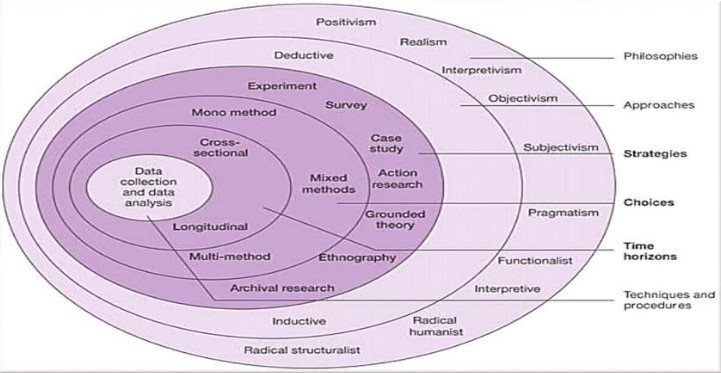
Figure 3.1: Research Onion
Source : (Saunders et al. 2015)
3.3 Research philosophy
In this study, secondary method was approached and it helped the author to gather some relevant information on this mentioned topic. This research gave a brief explanation on the topic and also brings out a prediction which is the major advantage of taking primary method. Secondary method also helped to understand the present scenario on this topic. Relying on the survey process, enough data was collected to bring out the main issue on this study topic. Positivism approach was taken to as it helps the author to gain trust for the gathered knowledge.
There is no common sense presence to jeopardize the outcome. This method helped to stick on the logic only. In the opinion of Radojevic, Stanisic & Stanic (2015), there are no differences in the logic of inquiry when it comes to science. Deductive approach was taken in order to present a clear view of the result of survey. This research topic was on the customer satisfaction in hotel industry. Secondary information collecting process was helpful to analyze the customer satisfaction scenario of the Soul bar and bistro. This data collection method was faithful and the collected data done by the researcher gave the information to make logical assumptions.
3.4 Research approach
The research approach impacts design and provides a possibility to consider benefits and restrictions of several approaches available to the author. There are two types of approach present such as inductive and deductive. In this study, deductive approach was taken to complete the research. According to Kothari (2004), this approach was helpful to collect information within a set of timeframe and also helped to finish the project. The deductive approach helped to collect relevant data which was helpful to analysis the customer satisfaction issue after. It was easy to survey amongst the employee of the soul bar and bistro. This method was effective and also cost effective to collect the information. The rules of this method were very clear and easy to explain. In this study, there was plenty of information found and gathered to complete the research properly. Survey process helped a lot of getting a clear and brief data about the customer satisfaction part in soul bar and bistro.
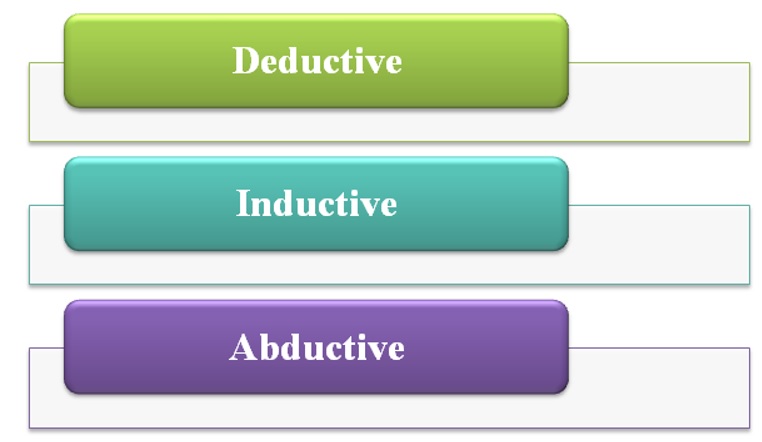
Figure 3.2: Different types of research approach
(Source: Learner)
3.5 Research design
Educational research helps to comprehend the educational matter, questions and procedure. Secondary research method helped to understand others, predicted future results, enhances the ability of any future research, practice and raises a new series of queries to research (Pitt, 2016). Moreover this method was easy and inexpensive to find a whole range of data to analyze after.
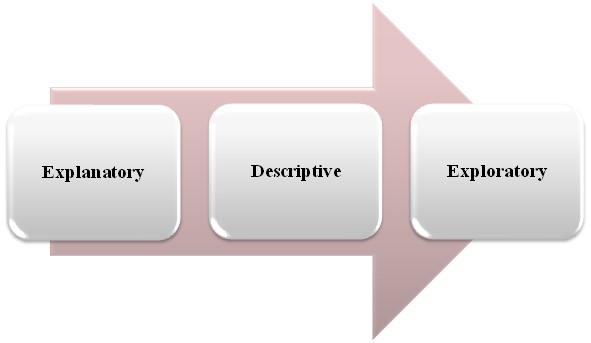
Figure 3.3: Different types of research design
(Source: Learner)
In this study, descriptive research design was taken to design the topic seamlessly. Descriptive method provided a very deep analysis of the topic. This method was very fast compared with other methods which were available. The main focus of the descriptive design method was on the uses of descriptive design in educational settings. This method was very helpful to provide a clear and transparent idea for the future researchers. Customer satisfaction issue is not a new thing so doing a survey process among all the employees of Soul bar and bistro was indeed a great choice. As opined by Yin et al. (2009), the secondary data research technique was quicker and easier compared to other research methods. This helped to find the conclusion and probable recommendations a lot faster. This research conveyed the customer satisfaction scenario in Soul bar and bistro.
3.6 Research method
Secondary data collection method was used to collect the relevant information on the topic of customer satisfaction in soul bar and bistro. Qualitative data collection process such as survey was used to gather the relevant data on this topic. Also, deductive approach was taken for easy assessment and analysis the data. Statics are produced by the help of survey report which created a clear picture. Appropriate questions are created in the survey to gather employee’s viewpoint and opinion about the Soul bar and bistro. After that the statics chart were made to describe about each and every question from the survey to present the final report clearly.
3.7 Research strategy
The main strategy of this research was providing the evidence and information about how to satisfy the needs of every customer at soul bar and bistro. Secondary data collection method was used to manage the budget because of its cost effectiveness. It was a step by step process to evaluate about the customer satisfaction related to Soul bar and bistro. Secondary qualitative data collection method was used to gather the relevant information on this topic first. Then a brief analysis was done to evaluate the importance of customer satisfaction in restaurants. According to Saeidi et al. (2015), customer satisfaction is the main factor for any small or big business to grow. Qualitative research method provided the depth and detail which was easy for analyzing the collected information about customer satisfaction. In the opinion of Yuen & Thai (2015), this method provides a deeper view of any data rather than analyzing simply the entire topic. This qualitative data was not jeopardized by emotions or feelings and illogical opinions. Survey process was helpful for understanding the thoughts of participants on this particular topic.
3.8 Data analysis procedure
Secondary data analysis was taken in this research due to its time effectiveness and saved a lot of money to find the issues on customer satisfaction. Survey process was used in this research to gather the relevant information. Survey was conducted by the researcher among the employees of soul bar and bistro. Survey process valued the opinion of the participants in this case employees. This process involved a small group of people to collect information of any topic and provided a in depth view of the examining topic. Small amount of data made the researcher job comparatively easier. In the opinion of Saeidi et al. (2015), quantitative data focuses on the quantity such as on the numbers and statistics. Therefore, analysis demands on the counting and quantifying to go to the conclusion. Small sample size of data made the conclusion part easy. Statics which came out by the help of survey made the analysis considerable. Accuracy of result can be found in this quantitative survey method. Quantitative methods are best to provide summaries of collected data that provide the whole general idea of the topic.
3.9 Types of time horizon

Figure 3.4: Timeline
(Source: Created by learner)
3.10 Ethical consideration
In this research all the information provided are genuine and authentic. All the data is protected with the data protection act. The author ensures all the information’s quality and integrity. Informed consent was taken prior to conduct a survey among the employees of soul bar and bistro. The entire data was not hampered by any third party involvement. The researcher approved about all the information’s confidentiality and anonymity. All the participants who took part in the survey process of their own free will. The researcher took the responsibility of not causing any harm to participants. Along with that, the protection of maintaining all participants’ privacy was the responsibility of the researcher. The ethics of morality, motivations and situation based acts was taken into consideration during the entire research. This research maintained nobility and transparency.
3.11 Research limitation
The whole research for customer satisfaction is based on the survey process which was conducted between employees of soul bar and bistro. The major disadvantage of doing a survey process was sometimes the result can be limited and cannot shed light on the whole situation. In this case, every employee was not ready to poses with the survey. So, it was difficult to understand about the whole employee opinion and their views. If the entire employee was participated in the survey process then the analysis on this customer satisfaction issue on Soul bar and bistro could be easier and clear.
3.12 Conclusion
This research study was based on the secondary quantitative data collection method. This particular method made it very easy to gather all the relevant information about the customer satisfaction topic. Moreover, survey process which has been conducted with the employees of Soul bar and bistro was a great factor to finish the analysis and come to a conclusion. There was so many information explored by doing the survey. This process saved the time and the money both and helped extremely to finish the project within the given timeline. Survey process was very helpful to understand the employee’s point of view about the customer satisfaction issue on Soul bar and bistro.
Chapter 4: Data Analysis
4.1 Introduction
The whole transaction of a company is detected by data analysis. Customer feedback, ratings of company, popularity of company, yearly profit and loss amount are also found out by data analysis. Here the data analyze was done by collecting the secondary data. Secondary data was collected by doing survey According to those interviews some questionnaires was made. The current situation of customer satisfaction of the company can be decided from those questionnaires. The data which was collected by survey and interviews were quantitative data. Solutions of the present problems iss possible when a clear and transparent data sheet is created. Total data analysis should be on company’s good and bad sides.
4.2 Quantitative Data Analysis
Q1. What is your age?
|
Age |
Total No of response |
Number of respondents |
Total percentage (%) |
|
19-23 |
71 |
19 |
26.76 |
|
24-28 |
71 |
35 |
49.30 |
|
29-33 |
71 |
12 |
16.90 |
|
>33 |
71 |
5 |
7.04 |
Table 4.1: Employees age
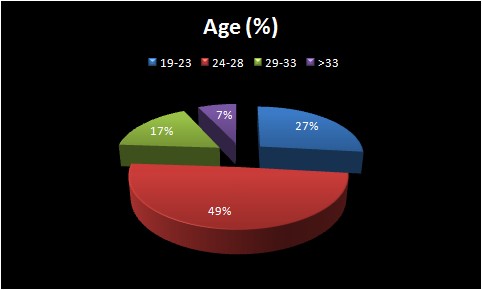
Figure 4.1: Graphical representation of Employees age
The maximum number of employee is in the age of 24 to 28, which shows that the restaurant has young and experience one.
Q2. Gender of the respondents
|
Gender |
Total No of response |
Number of respondents |
Total percentage (%) |
|
Female |
71 |
26 |
36.62 |
|
Male |
71 |
45 |
63.38 |
Table 4.2: Employees gender
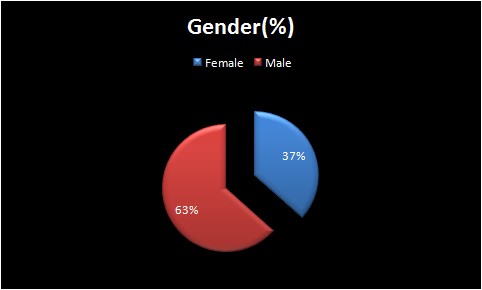
Figure 4.2: Graphical representation of Employees gender
The number of male employee is more but still the female employee do compete them in the work.
They enthusiastic environment helps in to encourage its employee be it male or female.
Q3. The dining area of restaurant has enough space for customers?
|
Responses |
Total No of response |
Number of respondents |
Total percentage (%) |
|
Strongly agree |
71 |
45 |
63.38 |
|
Agree |
71 |
15 |
21.12 |
|
Neutral |
71 |
5 |
7.04 |
|
Disagree |
71 |
3 |
4.22 |
|
Strongly disagree |
71 |
3 |
4.22 |
Table 4.3: Response for restaurant dining space
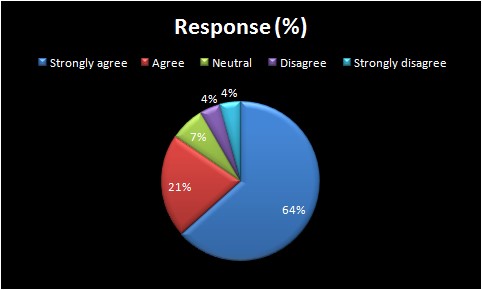
Figure 4.3: Graphical representation of Response (%)
The data extracted from the graph shows that maximum employee support the space for dining in restaurant. The dining space has to be minimum set by government as per the law, and restaurant need to follow them. The space may sometime be compromised and employee, customer feels the less space. The restaurant has to have very spacious as the customer’s needs comfortable, and some area for employee to serve well. The congested area usually irritate the customer, and place becomes too noisy sometime. The employees cannot serve properly in the congested place, and chance of ruining the dishes is high. The restaurant needs to understand the need of the customers, as they are doing customer oriented business. The customers the only one they need to listen, the customer satisfaction has the positive impact on the restaurant.
Q4. Interaction with customer helps you identifying the problems?
|
Responses |
Total responds |
No. of respondents |
Total percentage (%) |
|
Strongly agree |
71 |
30 |
42.25 |
|
Agree |
71 |
22 |
30.98 |
|
Neutral |
71 |
4 |
5.63 |
|
Disagree |
71 |
9 |
12.67 |
|
Strongly disagree |
71 |
6 |
8.45 |
Table 4.4: Responses for interaction with customers
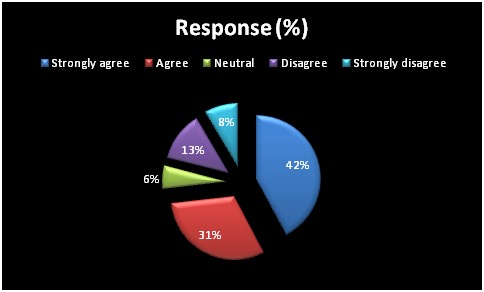
Figure 4.4: Graphical representation of the response (%)
The data shown here was due to the interaction of employee with the customers. The employee needs to be friendly and quick to response, as these things are one of the satisfactions. The customers need to be informed about something new dishes and offers, and complains to be heard. The response shown here indicates that most of the employee feels that interacting with customers helps in identify the problems and issues. The host and the staffs need to be well dressed and well mannered, which showcase the cleanliness of the restaurant. The exchange of word between employee and customer is very important; this reduces half of the dissatisfaction of the customer. Few employees also disagreed with the question, as they must have felt that service would be the way to identify the problems. It is good that the entire employee did participate in the survey.
Q5. Do you allow any type of nuisance in your restaurant?
|
Responses |
Total respondents |
No. of respondents |
Total percentage (%) |
|
Strongly agree |
71 |
1 |
1.40 |
|
Agree |
71 |
2 |
2.80 |
|
Neutral |
71 |
15 |
21.12 |
|
Disagree |
71 |
25 |
35.21 |
|
Strongly disagree |
71 |
29 |
40.84 |
Table 4.5: Response of allowing any nuisance
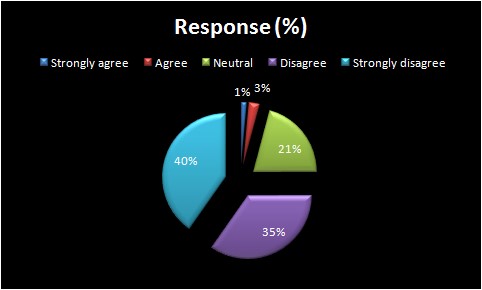
Figure 4.5: Graphical representation of the response
The response shows the responsibility of every employee to maintain their etiquettes and manner. The management has to maintain the discipline and etiquettes of the workforce and any nuisance need to be corrected. The restaurant cannot tolerate any kind of misbehaving by staff or employee, this leads to negative impact of restaurant. The customers see the positive vibe from the well being of the employee, but the nuisance shows the negative vibe. The customer usually avoids this kind of restaurant, and thus it leads to great loss for that restaurant. The survey also shows that the employee too disagrees with the nuisance, and they do not allow such thing. The employee knows that misbehaving has no place in workplace and satisfying the customer is their sole purpose. Therefore the graph shows that them management is mature and doing good job towards restaurant’s goal.
Q6. Is there any role of management in the restaurant?
|
Responses |
Total respondents |
No. of respondents |
Response (%) |
|
Strongly agree |
71 |
39 |
54.92 |
|
Agree |
71 |
28 |
39.43 |
|
Neutral |
71 |
2 |
2.81 |
|
Disagree |
71 |
1 |
1.40 |
|
Strongly disagree |
71 |
1 |
1.40 |
Table 4.6: Response for the role of management
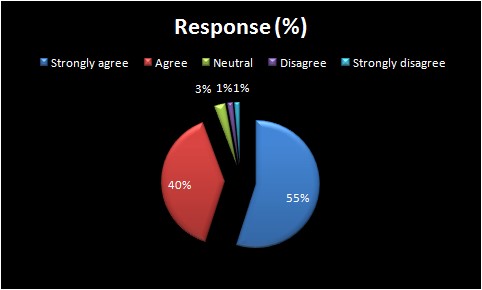
Figure 4.6: Graphical representation of the response
The main role of employees
The role of management in the restaurant is very important as they are backbone of any restaurant. The management decides and implements the ideas and rules, which are needed for the betterment of the restaurant. The hierarchy of the management controls and understands the basic need of customer and employee. Therefore is any change and idea has to be referred to the top management for the immediate action. The customer sometime suggest something new and suggestion are need to discussed and implement if it is for betterment of restaurant. Therefore management has the upper hand in the restaurant and they are the whole and sole of the restaurant.
Q7. Do frequent hike in price affect the customers?
|
Responses |
Total respondents |
No. of respondents |
Response (%) |
|
Strongly agree |
71 |
20 |
28.16 |
|
Agree |
71 |
25 |
35.21 |
|
Neutral |
71 |
10 |
14.08 |
|
Disagree |
71 |
11 |
15.49 |
|
Strongly disagree |
71 |
5 |
7.04 |
Table 4.7: Response for the frequent hike in price
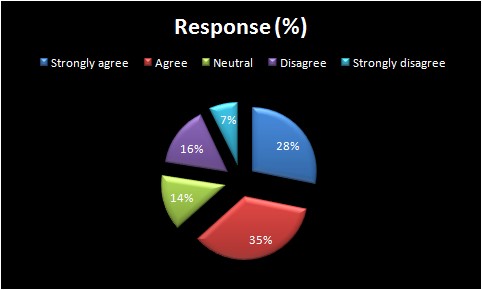
Figure 4.7: Graphical representation of the response
The restaurant when in initial stage does not has to hike the food frequently, as customer would not like. The frequent hike will disappoint the customers, even the loyal ones too. The management has to see the variable which is cause for hike in price. The customer does not appreciate hike in price frequently, and this may lead to loss of customers.
Q8. Is there any negligence of service to the customer?
|
Responses |
Total respondents |
No. of respondents |
Response (%) |
|
Strongly agree |
71 |
1 |
1.40 |
|
Agree |
71 |
3 |
4.22 |
|
Neutral |
71 |
5 |
7.04 |
|
Disagree |
71 |
17 |
23.94 |
|
Strongly disagree |
71 |
45 |
63.38 |
Table 4.8: Response for the negligence of the service
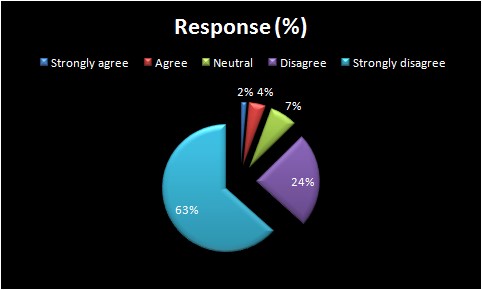
Figure 4.8: Graphical representation of the response
The staffs are well trained toward the service and behavior, but sometime there is chance of missing the service. The staffs and employee are informing about their service but there is chance of missing it, and the management to see that. The missing of service is considered as the negligence of the service, and it effects the growth of restaurant. The non availability of staff, shortage of staff sometime leads to this situation. Sometime the behavior and attitude of staff is also termed as the negligence of the service.
Q9. Does advertised food has been stocked?
|
Responses |
Total respondents |
No. of respondents |
Response (%) |
|
Strongly agree |
71 |
25 |
35.21 |
|
Agree |
71 |
20 |
28.16 |
|
Neutral |
71 |
12 |
16.90 |
|
Disagree |
71 |
10 |
14.08 |
|
Strongly disagree |
71 |
4 |
5.63 |
Table 4.9: Response for the stock of the advertise food
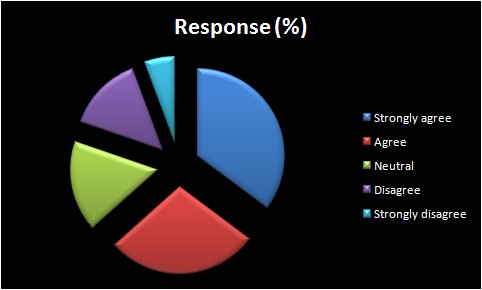
Figure 4.9: Graphical representation of the response
The best way to promote the restaurant is by advertising it on the billboard, TV, radio, newspaper and social media. The advertisement is done to popularize the restaurant, when they are at initial stage of the business. The successful restaurant advertises their food which is most liked by the customers. The food which are most popular and the food which are new are advertised to attract more customers. The advertisement basically attracts the customer, and the food which is advertised need to have stock. The new customer who often visit the restaurant search for the advertise food, and non availability dishearten them.
Q10. Is there any prompt action against any complaint raised by customer?
|
Responses |
Total respondents |
No. of respondents |
Response (%) |
|
Strongly agree |
71 |
30 |
42.25 |
|
Agree |
71 |
25 |
35.21 |
|
Neutral |
71 |
8 |
11.26 |
|
Disagree |
71 |
5 |
7.04 |
|
Strongly disagree |
71 |
3 |
4.22 |
Table 4.10: Response against promptness of employees
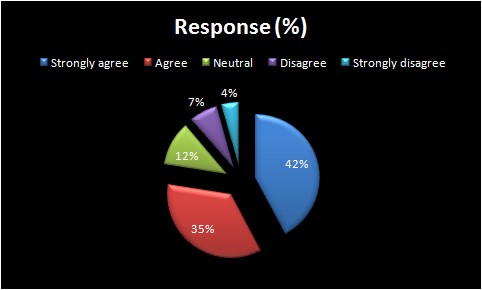
Figure 4.10: Graphical representation of the response
The complained are often raised and told, but solving them quickly is the skill. This type of skill is needed in every employee to tackle the issues and problem raised by the customer. The survey shows that the most of the employee agree that they are prompt to the customer request. Some are not quick and they ignore, that is unfortunately for the restaurant. Management needs to correct the mistakes and see to their faulty behavior.
Q11. Do you consider cleanliness as a top requirement in customer satisfaction?
|
Responses |
Total respondents |
No. of respondents |
Response (%) |
|
Strongly agree |
71 |
50 |
70.42 |
|
Agree |
71 |
19 |
26.76 |
|
Neutral |
71 |
0 |
0 |
|
Disagree |
71 |
1 |
1.40 |
|
Strongly disagree |
71 |
1 |
1.40 |
Table 4.11: Response for cleanliness
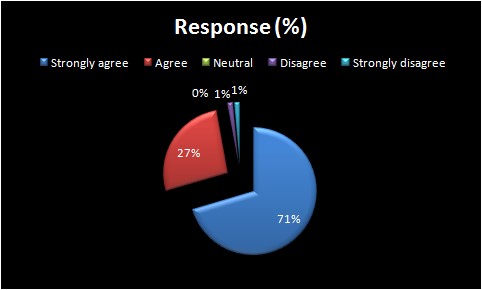
Figure 4.11: Graphical representation of the response
The motto of the every restaurant is to have neat and clean workplace, for hygienic food and place. The customers are very much concern about their health and hygiene and which is obvious. There is a separate department for taking care of the cleanliness, and hygiene food. The work area is cleaned and perfumed to look good; the kitchen area is also cleaned after the work. The cleanliness is vital point for attracting the customer; the smell of the restaurant has also to be good.
Q12. Does your workplace have a friendly environment for gaining customer attraction?
|
Responses |
Total respondents |
No. of respondents |
Response (%) |
|
Strongly agree |
71 |
32 |
45.07 |
|
Agree |
71 |
27 |
38.02 |
|
Neutral |
71 |
10 |
14.08 |
|
Disagree |
71 |
1 |
1.40 |
|
Strongly disagree |
71 |
1 |
1.40 |
Table 4.12: Response for friendly environment
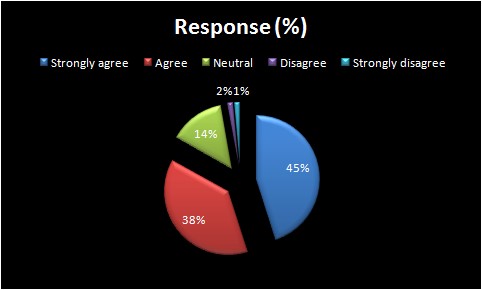
Figure 4.12: Graphical representation of response
The above table makes sure that in the workplace of the restaurant has to be friendly, for work efficient. The friendly nature of workplace help employee to do more creative and innovative things. The craziness among employee is appreciated in mannered way. The customer sees the environment and they mix with the environment. The customer’s participation is highly appreciated, and shows him satisfaction level of the customer. Implementation of many rule often ruin the environment of the restaurant, and employee feel pressurized.
Q13. Do you think that the meal served in the restaurant can help to gain customer attraction?
|
Responses |
Total respondents |
No. of respondents |
Response (%) |
|
Strongly agree |
71 |
36 |
50.70 |
|
Agree |
71 |
25 |
35.21 |
|
Neutral |
71 |
1 |
1.40 |
|
Disagree |
71 |
6 |
8.45 |
|
Strongly disagree |
71 |
3 |
4.22 |
Table 4.13: Response for the good meal served
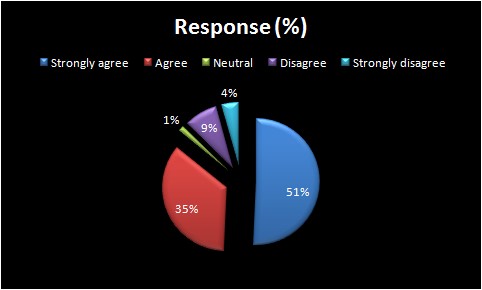
Figure 4.13: Graphical representation of the response
From above graph the quality of the food served in the restaurant has a great impact on the growth of the restaurant. The chef hired has to be good and experienced. The chef should know the need of the customer; they can even try for the new dish. The good food automatically popularizes it and the restaurant. This way it helps promoting the restaurant and food.
Q14. How much the customers are satisfied with the service and food in Soul Bar and Bistro restaurant?
|
Responses |
Total respondents |
No. of respondents |
Response (%) |
|
Strongly agree |
71 |
18 |
25.35 |
|
Agree |
71 |
14 |
19.71 |
|
Neutral |
71 |
11 |
15.49 |
|
Disagree |
71 |
12 |
16.90 |
|
Strongly disagree |
71 |
16 |
22.53 |
Table 4.14: Response for the customer satisfaction with food & service
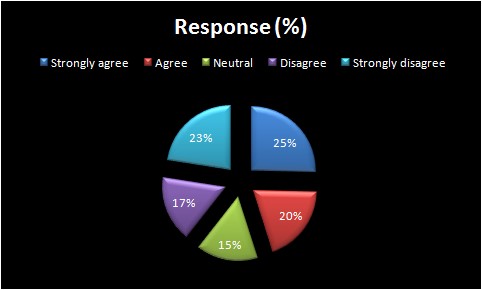
Figure 4.14: Graphical representation of the response
From the graph, it is clearly seen that the food and service is not the only thing that customers are satisfied. Customers want more than that, that is workplace environment, behavior, manner, and friendly nature. These things are counted as the vital variable in running a restaurant.
Q15. Do you agree if there is any new customer coming from the recommendation of existing customer?
|
Responses |
Total respondents |
No. of respondents |
Response (%) |
|
Strongly agree |
71 |
20 |
28.16 |
|
Agree |
71 |
3 |
4.22 |
|
Neutral |
71 |
2 |
2.81 |
|
Disagree |
71 |
36 |
50.70 |
|
Strongly disagree |
71 |
10 |
14.08 |
Table 4.15: Response for the new customers on recommendation
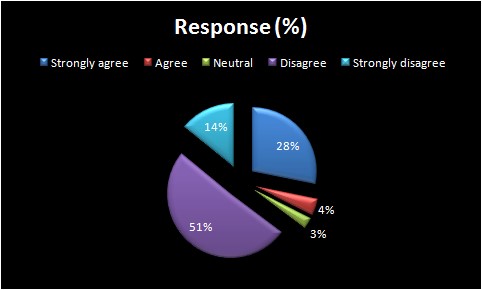
Figure 4.15: Graphical representation of the response
From the above graph, it is observed that the customers coming from recommendation is overall good. The good food, service and environment help the restaurant gaining the new customers. The existing customers usually recommended the people about the Soul Bar and Bistro and this are also a type of a advertising.
4.3 Findings from the analysis
Customer Satisfaction is a simple process which describe the feelings and opinion which a customer holds about a company. The future of any organization depends upon the customer satisfaction which leads to a better future of any particular company. Many organizations have failed to succeed in the customer satisfaction part. They have failed to use a perfect method to analyze the situation thus failure occurred. Many times organizations could not succeed in the customer satisfaction part because of flawed method usage to analyze the situation. In this study, the researcher used the secondary quantitative method to describe the employees point of view about the services, product and infrastructure of the Soul bar and bistro. Also, survey process was taken to bring out the scenario more clearly and with transparency.
It has been found that the employees had the problem when interacting with customers. Interaction or communication is the main factor to attract the concentration of the customers. In this case, this was the huge factor for lacking in the satisfaction part. Though, not all the employee had the problem on this customer interaction part. Customer satisfaction will not come if the employees cannot be free and friendly. Customer service always plays a big role in terms of the satisfaction of any customer. In this study, it has been clear that the company was lacking in the field of solving the complaints which has been raised by the customers. This one of the major factor to think about because complaints are must be taken carefully and then take action against those complaints.
Cleanliness is the definite factor which must be taken into consideration when it comes to customer satisfaction. In this study, it has been found that in the area of cleanliness it can be improved. In this study, the Soul bar and bistro tends to served the food along with beverages. It has been found that the food quality must be taken into consideration in case of customer satisfaction. Food is for all ages, so food is a definite factor of making customers happy. Also, a management of any organization has to be very careful when it comes to customer satisfaction. They must take all the responsibilities in terms of service, food quality, customer feedback and grievance. It is proved that if a management of a company is great then the organization is great. So this was another area which was lacking and can be improved.
4.4 Conclusion
Every other company has some negative factors which can be improved. After the analysis based on the survey method, it has been clear that the Soul bar and bistro had some issues with the customer interaction part. Interaction is the key factor to satisfy the customers which can be improved in order to gain customer loyalty. It has been found that the food quality sometimes was not good enough to bring the customers back. Most importantly, cleanliness is a basic hygiene which everyone should maintain. For a restaurant, cleanliness matters the most to attract the customers and also maintaining satisfaction of every customer.
Chapter 5 Conclusion
5.1 Introduction
This chapter contains the whole concluded topics after discussed the total matter of the restaurant. According to the case study the discussion topic is customer satisfaction of restaurant. Customer satisfaction is depending on various parameters. They are product quality, loyalty of company, price of company and so on. The whole discussion is on the current knowledge over customer satisfaction, the findings and the effects of customer satisfaction, methodology and data analysis. The whole discussion about customer satisfaction strategy and how to implement it is known by readers. Customer satisfaction is the main factor of profit of any company. Bad feedbacks are also effect on the profit of the company
5.2 Findings
Finding section help reader to understand that what is the discussion topic and what is decision take for every discussion problems. In findings there is two major parts. One is what are finding out problems and what the solution to solve the problems is. An actually important topic of total discussion is shortly discussed here. It is a total brief about the importance of dissertation, the purpose of the dissertation, the research method, methodology and the data analysis which are finding out by survey.
Introduction is discussed about the history and importance of the dissertation. From this, the researcher gets the overall idea over the dissertation. The conceptual framework and the background of the study is the place of findings information in the introduction section.
Literature review is written in a dissertation for understand the purpose and the expectation of the research.It is a building block of any dissertation. From literature review the demonstration over finding source is known. From this section Kano Model of customer satisfaction and Equity theory is also known to the reader. The gap of the method of customer satisfaction is also known from literature review. The continuity and consistency is also known from this section.
Methodology contains research onion, research philosophy, research approach, research design, research method, research strategy, data analysis procedure, ethical consideration and research limitation. In research onion the findings are the steps of total research. It is helpful to complete the research on a particular topic. Research method contains the processing of research. The findings from this section are what the proper way to complete the research is. In data analysis process the total gathered information is known to reader. Research strategy and ethical consideration contain the strategy of the method and the ethical views of the dissertation.
Data analysis had done here by surveying and various interviews. The data which is collected is secondary and quantitative data. In data analysis a survey was done over 71 employees of the restaurant. Some interviews were also done to known to the customer feedback over the restaurant. From surveys and interviews it was concluded that the employees are well mannered and the service is also good. They were very prompt to their duties. Data analysis was done by likert scale and it was age wise survey. Various findings were gathered from the data analysis. From graphical representation of the survey and interview the total information is view in one table.
Overall findings of dissertation are the main key of customer satisfaction is depending on the service of the employees of the restaurant. The product quality and the communication is good for the particular restaurant. They provide good and quick service. They solved any problem quickly. They maintained a particular strategy of customer satisfaction. Some negative sides were also find out by the research. The restaurant had no online service and their website did not contain enough information about the restaurant. The company should develop their negative sides. Solving their negative sides company should gain more profit.
5.3 Conclusion
The discussion dissertation is about the customer satisfaction of a restaurant. The various elements related to customer satisfaction are discussed here. The problem faced by any company due to customer dissatisfaction and the profit due to customer satisfaction was also discussed here. After discussion of the various customer satisfaction parameters it was concluded that the profit is depend only the feedback of the customers. Customer satisfaction is all about the customer attitude over the employee. Actually it is an emotional anticipation between them. Customer satisfaction is depending on three variables. They are Conative variables, Cognitive variables and affective variables. The conative variables depend on the communication between the customer and the agent during the buying time. The cognitive variables depend on the quality of the product and the performance of the product. The affective variables depend on the emotion of the customer after using the products. From these four elements it is concluded that the key of the customer satisfaction depends on the employees of the company.
5.4 Recommendation
According to the whole dissertation the customer satisfaction is depend upon company loyalty, customer’s feedback, quality of the product, communication between customer and the employees, skill of convincing customers, availability in internet and the importance of customer. The company will satisfy customers through some steps. Firstly, the company has to update their customer list. Company may contact with their customers through friendly emails and customers. Through these phone calls and email company can inform them about the current offers. Company’s interest about the customer is expressed by this procedure. Company can give thank you to their customers after every buying. They always engage their customers through social media or any other communication system with their products. Company behavior must be well mannered. They may give amazing offer to attract customers.
Secondly, the employees can be trained by the company management very well. Company should motivate their employees to convince more customers. They are trained how to fulfill the expectation of the customer promptly. Team leader can set a key performance indicator to know the improvement of the employees.
Thirdly, it is essential that employees have good product knowledge. Convincing customers is done with a great demonstration of company’s product. This demonstration is done by the company’s employee. Hence, if the employee does not have enough knowledge about products, it is not possible to convince more customers. These are the main parameters by which company can develop economically.
Reference List
Agnihotri, R., Dingus, R., Hu, M. Y., & Krush, M. T. (2016). Social media: Influencing customer satisfaction in B2B sales. Industrial Marketing Management, 53, 172-180. Retrieved From:https://www.researchgate.net/profile/Raj_Agnihotri/publication/281824048_Social_media_Influencing_customer_satisfaction_in_B2B_sales/links/57bb2ed408ae51eef1f3ce4d/Social-media-Influencing-customer-satisfaction-in-B2B-sales.pdf
Balvers, R. J., Gaski, J. F., & McDonald, B. (2016). Financial disclosure and customer satisfaction: Do companies talking the talk actually walk the walk?. Journal of business ethics, 139(1), 29-45. https://macsphere.mcmaster.ca/bitstream/11375/19060/1/sbv_wp_2014-02.pdf
Bandaru, S., Gaur, A., Deb, K., Khare, V., Chougule, R., & Bandyopadhyay, P. (2015). Development, analysis and applications of a quantitative methodology for assessing customer satisfaction using evolutionary optimization. Applied Soft Computing, 30, 265-278. http://www.diva-portal.org/smash/get/diva2:789581/FULLTEXT01.pdf
Bontis, N., Janošević, S., & Dženopoljac, V. (2015). Intellectual capital in Serbia’s hotel industry. International Journal of Contemporary Hospitality Management, 27(6), 1365-1384. Retrieved from: https://s3.amazonaws.com/academia.edu.documents/38962888/IJCHM-12-2013-0541_FINAL.pdf?AWSAccessKeyId=AKIAIWOWYYGZ2Y53UL3A&Expires=1529568866&Signature=CnkTIS%2BIocACDhbEXFL%2Be%2BLGG3M%3D&response-content-disposition=inline%3B%20filename%3DIJCHM-12-2013-0541_FINAL.pdf
Chung, K. H., Yu, J. E., Choi, M. G., & Shin, J. I. (2015). The effects of CSR on customer satisfaction and loyalty in China: the moderating role of corporate image. Journal of Economics, Business and Management, 3(5), 542-547. http://www.joebm.com/papers/243-M10014.pdf
Eid, R. (2015). Integrating Muslim customer perceived value, satisfaction, loyalty and retention in the tourism industry: An empirical study. International Journal of Tourism Research, 17(3), 249-260. Retrieved From:https://s3.amazonaws.com/academia.edu.documents/38887930/3-_IJTR-MCPV.pdf?AWSAccessKeyId=AKIAIWOWYYGZ2Y53UL3A&Expires=1529568565&Signature=vDWvvC2tbVfDYG%2BV7fO1PcLzpb8%3D&response-content-disposition=inline%3B%20filename%3DIntegrating_Muslim_Customer_Perceived_Va.pdf
Han, H., & Hyun, S. S. (2015). Customer retention in the medical tourism industry: Impact of quality, satisfaction, trust, and price reasonableness. Tourism Management, 46, 20-29. Retrieved From:https://www.researchgate.net/profile/Heesup_Han2/publication/265128733_Customer_retention_in_the_medical_tourism_industry_Impact_of_quality_satisfaction_trust_and_price_reasonableness/links/59f042470f7e9baeb26adf8b/Customer-retention-in-the-medical-tourism-industry-Impact-of-quality-satisfaction-trust-and-price-reasonableness.pdf
Hapsari, R., Clemes, M., & Dean, D. (2016). The mediating role of perceived value on the relationship between service quality and customer satisfaction: Evidence from Indonesian airline passengers. Procedia Economics and Finance, 35(3), 388-395. Retrieved from: https://ac.els-cdn.com/S2212567116000484/1-s2.0-S2212567116000484-main.pdf?_tid=b957e69f-5ceb-4e87-99de-735da0418cea&acdnat=1529565267_51766a6750d6ac3767aae38f449f0efb
Izogo, E. E., & Ogba, I. E. (2015). Service quality, customer satisfaction and loyalty in automobile repair services sector. International Journal of Quality & Reliability Management, 32(3), 250-269. Retrieved from: https://www.researchgate.net/profile/Ernest_Izogo/publication/269988354_Service_quality_customer_satisfaction_and_loyalty_in_automobile_repair_services_sector/links/550824220cf27e990e091ad7/Service-quality-customer-satisfaction-and-loyalty-in-automobile-repair-services-sector.pdf
Kim, M., Vogt, C. A., & Knutson, B. J. (2015). Relationships among customer satisfaction, delight, and loyalty in the hospitality industry. Journal of Hospitality & Tourism Research, 39(2), 170-197. Retrieved from: https://www.researchgate.net/profile/Miran_Kim12/publication/276077892_Relationships_Among_Customer_Satisfaction_Delight_and_Loyalty_in_the_Hospitality_Industry/links/5aeb3ebaa6fdcc8508b6c54c/Relationships-Among-Customer-Satisfaction-Delight-and-Loyalty-in-the-Hospitality-Industry.pdf
Kothari, C. R. (2004). Research methodology: Methods and techniques. New Age International. Retrieved from: http://dspace.utamu.ac.ug:8080/xmlui/bitstream/handle/123456789/181/Research%20Methodology%20-%20Methods%20and%20Techniques%202004.pdf?sequence=2&isAllowed=n
Kumar, S., & Malik, G. (2017). Impact of demographic variables on Customer Satisfaction and Customer Retention: A study of five star and five star deluxe hotels in NCR. International Journal of Research in Economics and Social Sciences, 7(4), 26-49. http://euroasiapub.org/wp-content/uploads/2017/05/4ESSApril-4727-1.pdf
Lawrence, B., & Perrigot, R. (2015). Influence of organizational form and customer type on online customer satisfaction ratings. Journal of Small Business Management, 53(S1), 58-74. https://scholarship.sha.cornell.edu/cgi/viewcontent.cgi?referer=https://scholar.google.co.in/&httpsredir=1&article=1833&context=articles
Liat, C. B., Mansori, S., & Huei, C. T. (2014). The associations between service quality, corporate image, customer satisfaction, and loyalty: Evidence from the Malaysian hotel industry. Journal of Hospitality Marketing & Management, 23(3), 314-326. Retrieved from: http://eprints.intimal.edu.my/165/1/The%20Associations%20Between%20Service%20Quality....pdf
Minh, N. H., Ha, N. T., Anh, P. C., & Matsui, Y. (2015). Service quality and customer satisfaction: A case study of the hotel industry in Vietnam. Asian Social Science, 11(10), 73. Retrieved from: http://www.ccsenet.org/journal/index.php/ass/article/viewFile/47755/25646
Molina-Azorín, J. F., Tarí, J. J., Pereira-Moliner, J., López-Gamero, M. D., & Pertusa-Ortega, E. M. (2015). The effects of quality and environmental management on competitive advantage: A mixed methods study in the hotel industry. Tourism Management, 50(8), 41-54. Retrieved from: https://pdfs.semanticscholar.org/1cda/173e19eadff533262faa328c447219209667.pdf
Pérez, A., & Del Bosque, I. R. (2015). An integrative framework to understand how CSR affects customer loyalty through identification, emotions, and satisfaction. Journal of Business Ethics, 129(3), 571-584. Retrieved From:https://repositorio.unican.es/xmlui/bitstream/handle/10902/9528/IntegrativeFrameworkUnderstand.pdf?sequence=1&isAllowed=y
Pinto, G., Ribeiro, H., Alves, S. R., & Veloso, C. M. (2018). CUSTOMER SATISFACTION, PRODUCT AND SERVICE QUALITY IN RETAIL MANAGEMENT: THE CASE OF A FAST FOOD CHAIN. In Economic and Social Development (Book of Proceedings), 28th International Scientific Conference on Economic and Social (p. 483). https://bib.irb.hr/datoteka/935771.Book_of_Proceedings_esdParis2018_Online.pdf#page=491
Pitt, M., Chotipanich, S., Issarasak, S., Mulholland, K., & Panupattanapong, P. (2016). An examination of facility management, customer satisfaction and service relationship in the Bangkok healthcare system. Indoor and Built Environment, 25(3), 442-458. Retrieved from: https://www.researchgate.net/profile/Sittiporn_Issarasak/publication/281091211_Indoor_and_and_Built_uilt_Environment_Review_An_examination_of_facility_management_customer_satisfaction_and_service_relationship_in_the_Bangkok_healthcare_system/links/55d452b508aec1b0429f694d.pdf
Radojevic, T., Stanisic, N., & Stanic, N. (2015). Ensuring positive feedback: Factors that influence customer satisfaction in the contemporary hospitality industry. Tourism Management, 51, 13-21. Retrieved from: https://pdfs.semanticscholar.org/00da/35133cf1290ee974e9d431b1362d314f074e.pdf
Radojevic, T., Stanisic, N., & Stanic, N. (2015). Ensuring positive feedback: Factors that influence customer satisfaction in the contemporary hospitality industry. Tourism Management, 51(3), 13-21. Retrieved from: https://pdfs.semanticscholar.org/00da/35133cf1290ee974e9d431b1362d314f074e.pdf
Saeidi, S. P., Sofian, S., Saeidi, P., Saeidi, S. P., & Saaeidi, S. A. (2015). How does corporate social responsibility contribute to firm financial performance? The mediating role of competitive advantage, reputation, and customer satisfaction. Journal of Business Research, 68(2), 341-350. Retrieved from: https://www.researchgate.net/profile/Saudah_Sofian/publication/273588405_How_does_corporate_social_responsibility_contribute_to_firm_financial_performance_The_mediating_role_of_competitive_advantage_reputation_and_customer_satisfaction/links/59e30b52aca2724cbfe35d62/How-does-corporate-social-responsibility-contribute-to-firm-financial-performance-The-mediating-role-of-competitive-advantage-reputation-and-customer-satisfaction.pdf
Saunders, M. N. (2011). Research methods for business students, 5/e. Pearson Education India. Retrived from: https://s3.amazonaws.com/academia.edu.documents/32802203/ResearchMethodsForBusinessStudents_Saunders.pdf?AWSAccessKeyId=AKIAIWOWYYGZ2Y53UL3A&Expires=1529650996&Signature=2orYz5vkX2FimtdyR75nJQKHhtE%3D&response-content-disposition=inline%3B%20filename%3DResearch_methods_for_business_students_f.pdf
Sengupta, A. S., Balaji, M. S., & Krishnan, B. C. (2015). How customers cope with service failure? A study of brand reputation and customer satisfaction. Journal of Business Research, 68(3), 665-674. Retrieved From:http://isisell.com/freeupload/15937how%20customers%20cope%20with%20service%20failure%20a%20study%20of%20brand%20reputation%20and%20%20customer%20satisfaction.pdf
Sengupta, A. S., Balaji, M. S., & Krishnan, B. C. (2015). How customers cope with service failure? A study of brand reputation and customer satisfaction. Journal of Business Research, 68(3), 665-674. http://isisell.com/freeupload/15937how%20customers%20cope%20with%20service%20failure%20a%20study%20of%20brand%20reputation%20and%20%20customer%20satisfaction.pdf
Söderlund, M. (2016). Employee mere presence and its impact on customer satisfaction. Psychology & Marketing, 33(6), 449-464. https://s3.amazonaws.com/academia.edu.documents/46073417/Soderlund_2016_Mere_Presence_.pdf?AWSAccessKeyId=AKIAIWOWYYGZ2Y53UL3A&Expires=1529568960&Signature=NC8EzYzna9K7DD2c419WUN6AcTs%3D&response-content-disposition=inline%3B%20filename%3DEmployee_Mere_Presence_and_Its_Impact_on.pdf
Söderlund, M. (2018). The proactive employee on the floor of the store and the impact on customer satisfaction. Journal of Retailing and Consumer Services, 43, 46-53. https://www.researchgate.net/profile/Magnus_Soederlund/publication/323883597_The_proactive_employee_on_the_floor_of_the_store_and_the_impact_on_customer_satisfaction/links/5ab150dfaca2721710ffba2c/The-proactive-employee-on-the-floor-of-the-store-and-the-impact-on-customer-satisfaction.pdf
Stathopoulou, A., & Balabanis, G. (2016). The effects of loyalty programs on customer satisfaction, trust, and loyalty toward high-and low-end fashion retailers. Journal of Business Research, 69(12), 5801-5808. http://iranarze.ir/wp-content/uploads/2017/07/E4253-IranArze.pdf
Yang, S., Chen, X., & Shen, X. (2017). An exploratory study of customer satisfaction with international student recruitment agencies: a case study in New Zealand. International Journal of Business and Management, 12(11), 130. Retrieved from: http://www.ccsenet.org/journal/index.php/ijbm/article/viewFile/68888/38905
Yin, R., Rothstein, D., Qi, J., & Liu, S. (2009). Methodology for an Integrative Assessment of China's Ecological Restoration Programs. In An Integrated Assessment of China&apso;s Ecological Restoration Programs (pp. 39-54). Springer, Dordrecht. Retrieved from: https://www.researchgate.net/profile/Runsheng_Yin2/publication/226955401_Methodology_for_an_Integrative_Assessment_of_China%27s_Ecological_Restoration_Programs/links/56d859b708aebabdb40abbc0.pdf
Yuen, K. F., & Thai, V. V. (2015). Service quality and customer satisfaction in liner shipping. International Journal of Quality and Service Sciences, 7(2/3), 170-183. Retrieved from: https://dr.ntu.edu.sg/bitstream/handle/10220/26056/Service%20Quality%20and%20Customer%20Satisfaction%20in%20Liner%20Shipping.pdf?sequence=3&isAllowed=y
Zablah, A. R., Carlson, B. D., Donavan, D. T., Maxham III, J. G., & Brown, T. J. (2016). A cross-lagged test of the association between customer satisfaction and employee job satisfaction in a relational context. Journal of Applied Psychology, 101(5), 743. Retrieved From: http://www.zablah.com/uploads/7/1/8/2/71823777/jap_2016.pdf
Zhou, L., Ye, S., Pearce, P. L., & Wu, M. Y. (2014). Refreshing hotel satisfaction studies by reconfiguring customer review data. International Journal of Hospitality Management, 38(12), 1-10. Retrieved from: https://s3.amazonaws.com/academia.edu.documents/34445326/2014_Zhou_et_al_Hotel_study.pdf?AWSAccessKeyId=AKIAIWOWYYGZ2Y53UL3A&Expires=1529568932&Signature=AvR8LgaL6JyBo73dvk1boYf69do%3D&response-content-disposition=inline%3B%20filename%3DRefreshing_hotel_satisfaction_studies_by.pdf
Appendixes
Appendix 1: Growth of customer satisfaction
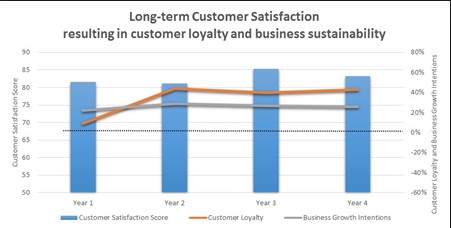
Appendix 2: Improvement of customer satisfaction
